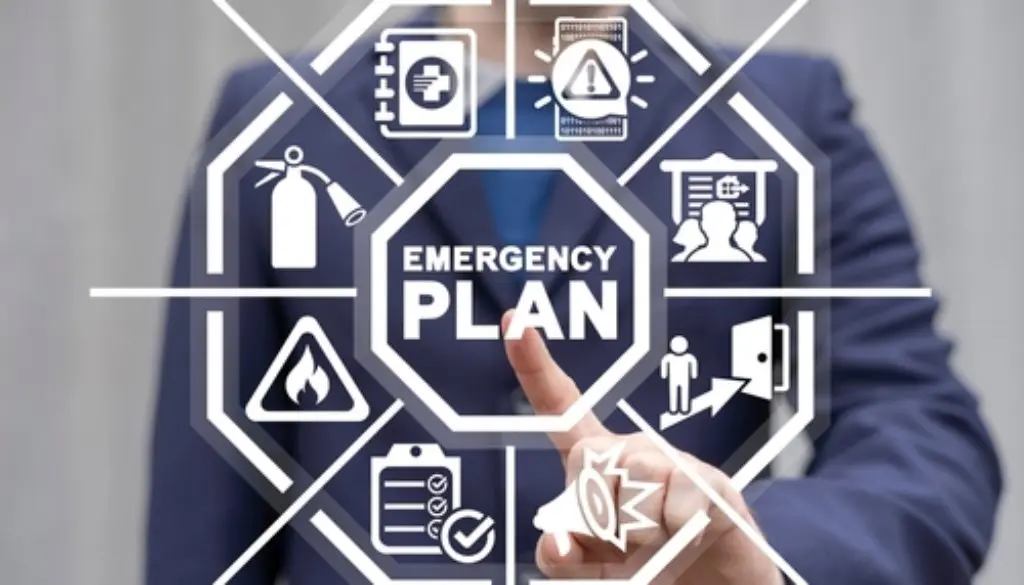Préparer votre entreprise à l’impensable
Following the impact of the COVID-19 pandemic, businesses are becoming more concerned with disaster preparation at a deeper level than ever before. Procedures and policies that once encompassed solely on-site emergencies such as natural disasters are now developing into full-fledged plans that cover a wide array of disasters, emergency and nonemergency alike.
The Federal Emergency Management Agency, or FEMA, describes disaster preparedness as the continuous cycle of planning, organizing, training, equipping, exercising, evaluating and executing corrective action to ensure effective coordination during emergency responses.
Emergencies are not isolated to situations of active assailants or natural disasters. They can also include man-made emergencies, gas leaks, road closures, severe weather, extreme temperatures or power outages.
Regardless of the emergency, businesses should be prepared with a plan that explicitly details the next steps following a disaster to mitigate harm and prevent panic.
The difference between disaster preparation and disaster recovery
Disaster preparation is the work that happens before the actual emergency scenario. It prevents additional safety hazards, panic, and fiscal loss by reducing the overall cost of emergencies — both financially and in terms of livelihood. Disaster preparation is needed before any sort of recovery can take place.
Disaster recovery is the action that follows an emergency. Organizations such as FEMA and the American Red Cross are some of the most well-known disaster recovery organizations in the country. First responders evaluate and assess the level of damage the disaster has brought and determine the best course of action to care for those afflicted.
In long-term recovery, disaster recovery can include rebuilding important structures such as homes and hospitals, clearing debris from roads, cleaning wildlife habitats or rebuilding a struggling economy.
Where disaster preparation is needed
Emergencies can strike anywhere at any time. All employers must be prepared to inform and protect their employees as early as possible. Maintaining communication with employees becomes vital and is the key to preventing panic, confusion, fear and further injuries.
Companies should prepare for all kinds of emergencies — natural disasters, mental health crises, fires, chemical leaks, and more.
Employers should also prepare for disasters because of their liability otherwise. If a victim or their family can prove negligence, your organization may be fined. OSHA penalties start at $14,502 per violation and may increase upwards of $145,027 for willful or repeated violations.
Answering the call — preparing your business for disasters
Disaster preparedness is much more complex for a business than for an individual or single-household family. There is a larger population to consider, along with laws and corporate policies.
Disaster plans need to cover what might happen whether employees are working remotely, are on-site or are traveling for business. Companies should implement and ensure their employees know how to reach others during and after emergencies and how to continue operations in the wake of an emergency.
Step 1: Risk Assessment
Although any time of emergency can happen at any time, your organization must consider the ones at which they are at the most risk.
For example, locations such as California may need a more extensive earthquake plan, while states in the Gulf of Mexico would need to understand how to handle hurricanes. However, it does not hurt to have a disaster plan in place for less common emergencies just in case.
Emergencies can also be industry-specific. Technology companies are more at risk for cyberattacks than construction companies. Evaluate the specific risks of your line of business and create a plan from there.
Step 2: Create a comprehensive plan
Plans should be comprehensive enough that everyone is aware of what is expected from them before disaster strikes. Assigning roles and task-specific to-do lists for certain team members and stakeholders can be the difference between preparation and panic.
With a mass communication system, emergency managers and human resource officials can identify what is needed from each stakeholder as well as implement follow-up plans.
Such a plan should also consider how to execute communications with employees before, during, and after emergencies, regardless of their location. The proper procedures should be implemented ahead of time so that if an emergency were to occur, employees would be able to quickly move into action. Through two-way communication features, a mass notification system can ensure you are connected with your employees at all times.
Step 3: Provide education and training
Reading a manual is not an effective way to learn for many employees. Wherever possible, practice important safety protocols with emergency drills. Employees and employees should know how to interact with the various forms of emergency alerts.
Even if your employees work remotely, webinars are a great way to ensure no one misses important information regarding your safety policies.
Training and drills provide a space for employees to ask questions, bring up concerns, as well as help your emergency management team smooth out any rough elements of your disaster plan.
How a mass communications system can help
Businesses can make their emergency alert system more effective by implementing a comprehensive communications platform that utilizes personal safety apps with notifications, wellness checks, geo-polling features, updated safety profiles and a library full of emergency policies and procedures.
Many businesses can incorporate their current emergency communication efforts, such as sirens and digital signage, with Rave Mobile’s Safety system and collaboration platform.
When coupled with the quick and efficient alert and communication technology that Rave’s system can offer, current emergency preparedness practices can be effectively executed.
With such a system, businesses protect their employees in a much faster, more efficient way:
- Mass text messaging systems for businesses are hosted in geo-redundant data centers and can benefit from zero bandwidth limitations.
- Automatically synchronization with contact information from personnel databases to ensure every employee can be reached.
- Businesses can send multimodal emergency alerts to avert the risk of missed alerts that so often go unnoticed with traditional signage and sirens.
It can be difficult to anticipate an emergency, but it always pays off to be prepared. To learn more about how you can implement Rave Mobile Safety’s mass communications system in your own business, visit us at:
https://www.ravemobilesafety.com/critical-communication-collaboration-solutions/.





